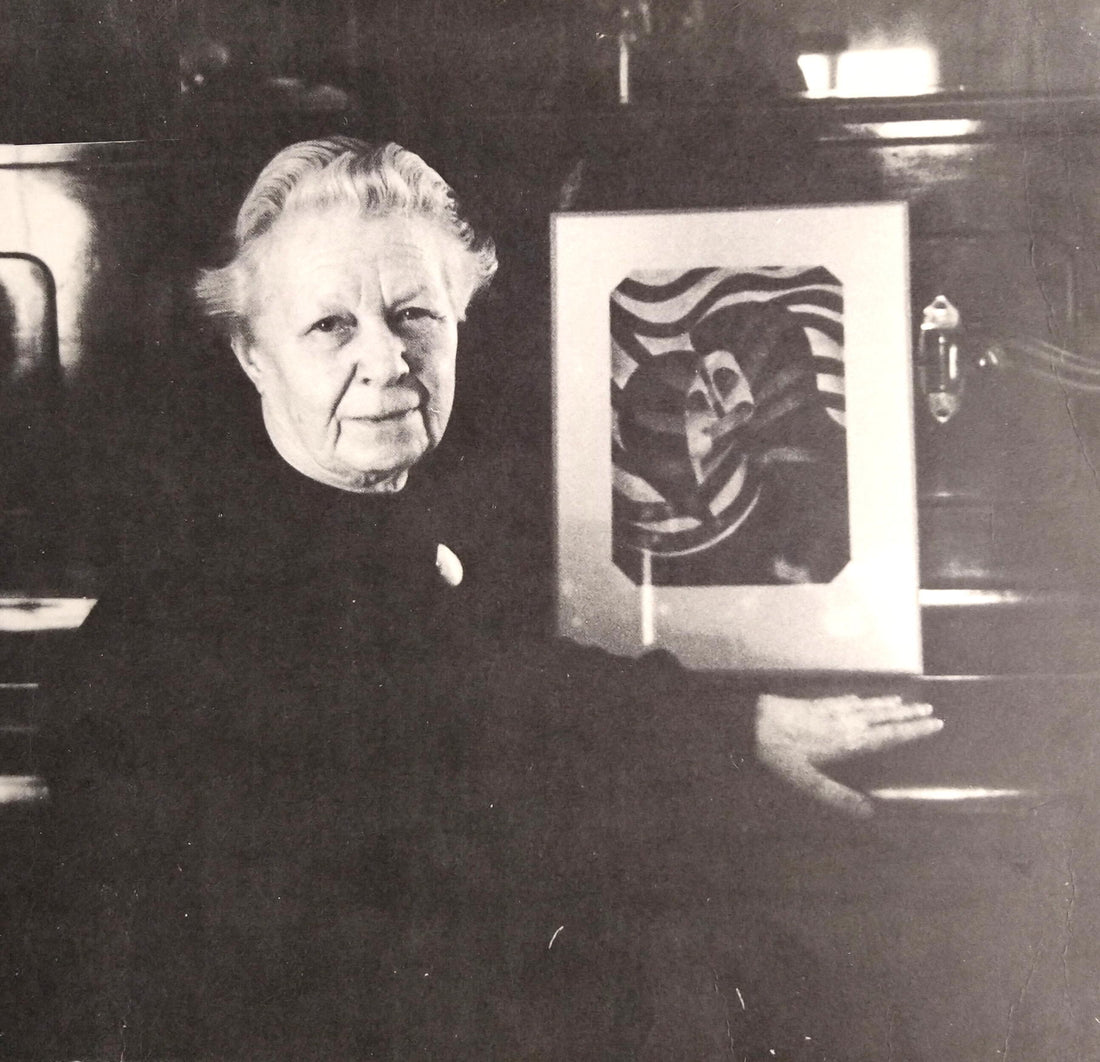First published: Autumn 2022
For Finnish artist Aleksandra Ionowa, her automatic drawings of flowers, faces and cosmic forces were a route to spiritual insight and a more dignified world
Aleksandra Ionowa (1899–1980) was 47 when she sensed the spirit world wanted to communicate with her. Expecting some kind of written message, she reached for a pencil, but instead watched in awe as her hand began to draw. The next evening, 50 more drawings flowed with jaw-dropping speed as if an inner force radiated from her artistically untrained hands. What started with rudimentary pencil marks soon developed into mysterious faces and otherworldly flowers, followed by abstract depictions of the invisible in the form of monochromatic cosmic energies, or harmonies of colour representing the sounds of the spirit world. Over the next three decades, Ionowa would create thousands of these artworks in pencil, chalk, pastel, watercolour, gouache and oil, each taking between two and 20 minutes. She said that the signature of the letter “H” was the name that the spiritual higher beings had given her.

Ionowa with Music of the Maker (1952) in c. 1970. All photos: The College of Psychic Studies with permission of the Ionowa Society and the Ionowa Foundation
Ionowa’s spiritualistic outpouring was not limited to drawing. It included theosophical messages and aphorisms written automatically, as well as the ability to play the piano in a style that was a far cry from her formal music training. The dynamics of the music oscillated between a loud forte and an ethereal quietness, and was produced using only the black keys on the piano. Ionowa believed the result were heavenly harmonies that could express life’s light and shadows.

East. Eastern Mysticism, 1951, pastel on paper, 12.5 x 16.5 in. / 32 x 42 cm
Unlike some practitioners of mediumistic art, Ionowa believed that – rather than being a mere conduit – she was in collaboration with the higher beings of the spirit world. She felt it was in her power to call at will on this spirit communication, receiving pictorial and audible answers to her questions, with the aim of spreading the knowledge to a wider audience, ultimately creating a more spiritual and dignified world. In this regard, she had much in common with other spirit-inspired artists, such as Hilma af Klint, Georgiana Houghton and Madge Gill. For Ionowa, it was a sacred undertaking to which she would devote the rest of her life.

HP Blavatsky, 1952, coloured pencil on paper, 8 x 11.5 in. / 21 x 29.5 cmk
Ionowa studied English and Italian in Lahti, but one day came across the Theosophical Society. Theosophy, meaning “divine wisdom”, was a way of thinking founded by the Russian-born mystic and writer Helena Blavatsky. Followers believed that a group of spiritual “masters” had been initiated into the secrets of a hidden wisdom which could be found embedded in ancient philosophies and religions, as well as in nature. Theosophists proposed that an individual could – through personal mystical experiences – access these mysteries and discover the truth of mankind’s inner essence, a truth that humanity had become disconnected from in its material world. Meditation, or some sort of transcendence of normal consciousness, was recommended to help the process. Intrigued, Ionowa went on a quest to find out more.
By VIVIENNE ROBERTS
This is an article extract; read the full article in Raw Vision #112




